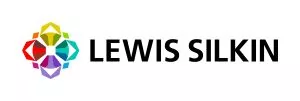- within Technology topic(s)
- with Senior Company Executives, HR and Finance and Tax Executives
- with readers working within the Banking & Credit industries
- within Cannabis & Hemp, Law Practice Management and Criminal Law topic(s)
- in United Kingdom
AI tools are rapidly transforming the creative industries, from the more mundane automating admin or de-mixing audio to the more innovative, such as enhancing ideation, creation of virtual environments or identifying emerging creative trends. But alongside the benefits comes a growing risk, a risk often called shadow AI. Shadow AI is the unauthorised or unmonitored use of AI tools by employees, often outside company-approved systems or devices.
Why is this a problem? Creative businesses thrive on originality, data integrity and brand reputation. Shadow AI threatens all three. When employees or contractors use free or unvetted AI platforms and tools, they may unknowingly expose confidential client data, infringe intellectual property rights or rely on outputs that lack quality control. They may not realise that they are, at best, breaching company policy and at worst breaching legal obligations.
This is not just a tech issue, it's a governance challenge. Shadow AI is the latest iteration of shadow IT. IT teams are familiar with this scenario, the difference here is shadow AI is growing faster than shadow IT as awareness of AI tools and platforms is greater. Employees often turn to these tools because they're accessible, powerful, and seemingly harmless and increasingly being used in their personal lives. In fact, major IT providers have been known to run marketing campaigns for their AI solutions targeting employees for this very reason (as was the case with shadow IT). Without oversight, governance and clear policies and processes, they can create serious compliance and reputational risks.
So what can leaders do about it?
- Acknowledge the reality
It's highly likely shadow AI is already within your organisation. The first tstep is recognising and understanding what AI tools (authorised or unauthorised) are being used, where and for what.
- Build trust through transparency
Rather than banning AI outright, offer approved tools and explain why certain tools are off-limits. Employees are more likely to follow rules when they understand the risks and alternatives.
- Create clear policies
Develop practical, easy-to-understand guidelines on AI use. Include examples relevant to your work, e.g. AI for copywriting, image generation, client proposals etc.
- Invest in AI literacy
Train teams on how to use AI responsibly. Empower your employees to innovate safely and reduce reliance on risky tools.
- Monitor and adapt
Use tech solutions to track AI usage and update policies as tools evolve. AI governance isn't static - it needs to grow with your business.
While shadow AI is a risk, it can also be seen as an opportunity to enable responsible innovation. An open and collaborative culture where employees can explore AI can lead to smarter, safer innovation, which, when coupled with the right governance and policies may enhance productivity, support ethical decision making and may even strengthen your brand.
The content of this article is intended to provide a general guide to the subject matter. Specialist advice should be sought about your specific circumstances.




